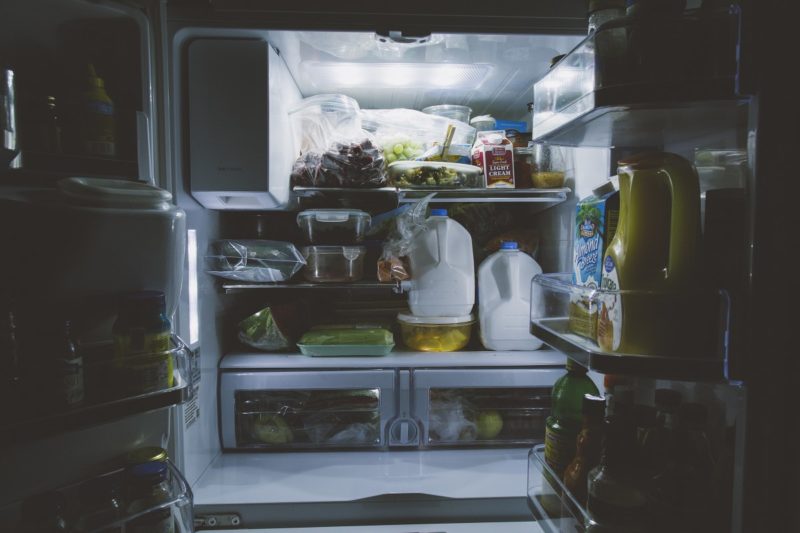Are you looking for how long should a fridge take to get cold? You come to the right place, and you’ll learn everything as you further delved into this article! The refrigerator is, without a doubt, one of the most necessary household items we own. It maintains the preservation of our goods by providing appropriate storage temperatures for our foodstuff.
Maybe you should have considered what might eventuate to your meals if you left the refrigerator door open by mistake or whether the electricity turned off? To avoid wasting food, you need to cool your fridge as quickly as feasible to avoid wasting food.

It might take two to twenty-four hours for a refrigerator to become icy. The time required for the fridge to cool down is based on your fridge’s age, size, brand, and condition. This article will cover what variables influence it, how to shorten the cooling time, and much more! So without further ado, let’s get started!
How To Calculate The Cooling Time Of Your Fridge
The simplest approach to figure out the cooling time for your fridge is to look up the product and serial numbers on Search and read the user guide or installation instructions on the company’s homepage. Alternatively, you can also go to a reputable retailer’s website. On your keyword Press Control+F and look for the phrase “hrs” whenever the installation documentation opens. Instead of spending fifteen minutes reviewing the full handbook, you may access the portion explaining cooling time within minutes at a time by doing so.
Factors That Influence Cooling Time Of Fridge
Which factors influence the cooling time of a fridge? There seem to be some aspects to consider, such as:
#1. Size of your fridge
Although there is no complex principle, a larger refrigerator will require more time to freeze. How long should a fridge take to get cold? Mini-fridges need only 4 hours completely cold, but many larger refrigerators need over 1 or 2 days.
#2. The temperature of the storage location
When a refrigerator is stored someplace warmer before getting to your residence, such as a heated vehicle, the beginning temperatures will be higher. As a result, reaching 40degree Farenhiet should need a little more time.
#3. Room temperature
The cooling duration is also influenced by the room temperature. The appropriate room temperature could be specified in your user handbook. But, if you keep your fridge in a heated environment, such as a basement or an outside dining room, it may catch fire. It will continually overwork itself to stay calm, causing it to try to prolonged for extended periods. If the fridge (or refrigerators) will be in the basement, vents, fans, air conditioning, or isolation may be required to stay cold. In addition, We advise limiting your time in the sun.
#4. Condition and age
Outdated refrigerators may be less effective; thus, they will take more time for cooling than modern versions. Cooling times are slowed by dirty, filthy, and blocked fans. Last but not least, your refrigerator condition is significant. The fridge will not chill as quickly if some elements are malfunctioning. The thermostat, obstructed air outlets, a broken door gasket, the extractor motor, and even a malfunctioning compressor are crucial components.
#5. Empty vs. filled fridge
A piled-high fridge operates more efficiently because there is less area for hot airflow, making it more straightforward for the refrigerator to keep the temperature cold. But, it really would be beneficial if you didn’t keep stuff in the fridge when you initially started cooling down.
How Can I Make the Cooling Process Go More Quickly?
Here are some of my top ideas for making the cooling process go as efficiently as possible:
#1. Always shut the door
The important thing you have to do is shut the doors. It may appear to be insignificant, yet it represents a significant impact. When you unlock the door, you allow hot air inside, lengthening the time it takes for the room to cool down.
#2. Clean the coils
Ensure that the coils are cleaned. If your refrigerator’s coils are dirty, unclean, or blocked, it will have to struggle more to stay cool. After six months, We suggest washing the coils. You may also be interested to know about common refrigerator problem.
#3. Ensure proper airflow
Maintain proper ventilation by keeping several inches distance between your refrigerator and wall. Coils are typically found mostly in the rear of the building and require room to dissipate the warm air.
#4. Fridge plugged properly
The refrigerator must always be hooked into its plug socket, and the power rating on the refrigerator’s rating plate must comply. Fire danger is caused by an improper power supply.
#5. Check the room temperature
Check the room temperature to ensure it isn’t too hot. To speed up the cooling process, put on the ac, whereas the refrigerator is cooling.
It’s A Wrap!
We hope that this guide has answered you how long should a fridge take to get cold and you understand this article just in one go. Keep in your mind the cooling time depends mostly on your fridge size. As discussed above, the fridge longer the time it takes for cooling. You may also want to read about how much does a small fridge cost and how to reduce power consumption of fridge. Thank you, friends, for being with us at the end!
